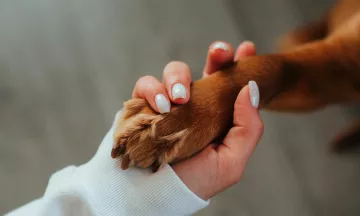Cats groom their coats on a daily basis. In fact, they devote approximately 15% of their time or almost half their 'waking' hours to this very activity! But what can you learn from this unique cat behaviour? What does this fastidious grooming habit reveal about your cat, and can their primping ever become a problem? Discover all you need to know about cat grooming in our article below!
Cats groom their fur using their famously rough, sandpaper-like tongues, which feature special 'papillae' (tiny backward-facing barbs). Regular grooming doesn’t only keep the cat’s fur spotlessly clean; it also makes it waterproof via the distribution of sebum from the skin over the coat. This instinctive grooming habit results in the cat ingesting a significant amount of fur, which is subsequently regurgitated in the form of a furball. Interestingly, a cat’s individual grooming ritual provides cat owners and cat sitters alike with key information about the health and well-being of their kitty.
Own unique scent
Cats prefer their own personal scent. If they assume another scent (such as upon receiving a perfume-fuelled hug from yours truly), then they’ll instinctively try to regain their natural scent as quickly as possible. They do this by licking themselves from head to toe immediately after any such encounter. This allows them to regain their identity. Indeed, a good old groom quickly enables the cat to feel themselves again! So, avoid using powerful perfumes and fragranced lotions that can overwhelm your sensitive moggy. And, if you’re a cat sitter, always ensure that you wash your hands prior to home visits and wear neutral-smelling clothes. That way your feline charge will have no qualms about curling up on your lap for a well-earned snooze.

Insulation
Cats also groom themselves to remove any knots in their fur. A smooth coat that’s free from knots or matting provides optimal insulation. During winter, tangles can disrupt this insulating effect, resulting in your cat losing much-needed body heat. Conversely, the cat’s coat provides a cooling effect in the summer months. Cats don’t sweat in the same way as we do, neither do they pant like dogs. Instead, cats reduce their body temperature by licking their fur. The resulting saliva evaporates on their coat, producing a cooling effect.
You can give cats a helping hand with their grooming regime by brushing them regularly. Long-haired cats, in particular, welcome any assistance in the removal of excess fur.
Social behaviour
Cats also groom each other. Not only to clean each other's coats, but also as a display of affection. Your furry friend might even treat you to a lick or two. On your hair or hand for example. However, cats will only do this if they feel completely at ease in your company. And if your cat indulges in an intensive grooming session whilst sitting in your lap or in your close vicinity, it means: I feel safe in your presence.
Displacement behaviour
Cats that feel uncomfortable or nervous may suddenly start licking themselves. Such as when they encounter another cat or have been caught doing something naughty. This 'displacement behaviour' is intended to divert attention and keep the cat occupied.
Problematic grooming
Cats have specific grooming patterns. Such as cleaning their fur immediately after sleeping, eating, or using their litter box for example. They also tend to have a set grooming sequence, such as licking their face after mealtimes and their paws after using their litter box.
If a cat licks certain areas of their body excessively, then it could indicate a health problem. Cats that pay disproportionate attention to their genitals for example, might have a urinary tract or bladder problem. If they devote more attention to their mouth area than usual, then they may be suffering from toothache. Prolonged scratching or excessive grooming in specific spots can also indicate skin or coat problems, such as ticks, fleas, or allergies. In addition to excessive grooming, you should also be alert to redness, rashes, bald patches and wounds, and always consult your vet upon the detection of such symptoms.
Excessive grooming and licking can also be a sign of stress or boredom. Cats that feel uncomfortable will constantly lick themselves to suppress this feeling, which can result in bald patches. A happy cat is a relaxed cat. So, make sure that your cat’s basic needs are being met. Read more on how to make your cat happy
It’s not only excessive grooming that’s a problem. Cats sometimes start cleaning themselves less frequently or stop grooming altogether. Some senior cats groom less over time, simply because it has become too much for them. Sick cats may also stop grooming. If you notice that your cat has stopped grooming, then it’s important to consult a veterinarian. When should I take my pet to the vet?
In order to be able to detect any changes in your cat’s grooming habit, it’s essential that you keep a close eye on their 'normal' routine. So, pay attention to your cat. When does your mouser typically indulge in a grooming session? Where do they prefer to do that? What does it involve? Pass this information on to your cat sitter, so that they, too, can spot any changes in behaviour during their home visits.






